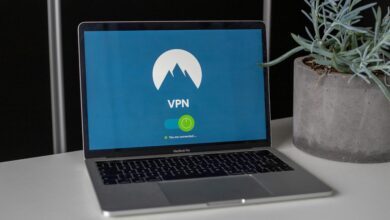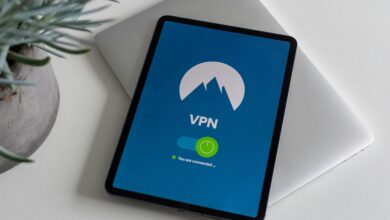How to Evaluate VPN Speed and Performance

In today’s digital age, Virtual Private Networks (VPNs) have become essential tools for enhancing online privacy, bypassing geo-restrictions, and securing internet connections. However, not all VPNs are created equal, and one of the most critical factors to consider when choosing a VPN is its speed and performance . A slow or unreliable VPN can lead to buffering videos, interrupted downloads, and frustrating browsing experiences.
In this article, we’ll explore how to evaluate VPN speed and performance , covering key metrics, testing methods, and tips for ensuring you select a VPN that meets your needs.
1. Understand the Factors That Affect VPN Speed
Before diving into testing methods, it’s important to understand the factors that influence a VPN’s speed and performance:
a) Server Location
- The physical distance between your device and the VPN server impacts latency and speed. Connecting to a nearby server typically results in faster speeds compared to a distant one.
b) Server Load
- High server load (many users connected to the same server) can slow down performance. Reputable VPN providers often display server load percentages to help users choose less congested servers.
c) Encryption Level
- Strong encryption ensures security but can slightly reduce speed. Balancing security and performance is crucial when selecting a protocol.
d) VPN Protocol
- Different protocols (e.g., OpenVPN, WireGuard, IKEv2, L2TP/IPSec) offer varying levels of speed and security. For example, WireGuard is known for its speed and efficiency, while OpenVPN prioritizes security.
e) Your Internet Connection
- Your base internet speed plays a significant role. A VPN cannot exceed your ISP’s maximum bandwidth, so starting with a fast connection is essential.
f) Device and Network Configuration
- Older devices or outdated software may struggle with modern encryption standards. Similarly, network congestion or shared Wi-Fi can impact performance.
By understanding these factors, you can identify potential bottlenecks and optimize your setup for better results.
2. Key Metrics to Measure VPN Speed and Performance
When evaluating a VPN, focus on the following metrics:
a) Download and Upload Speeds
- These measure how quickly data is transferred between your device and the internet. Use tools like Speedtest.net or Fast.com to compare speeds with and without the VPN enabled.
b) Latency (Ping)
- Latency refers to the time it takes for data to travel from your device to the server and back. Lower ping values indicate faster response times, which are crucial for activities like online gaming and video conferencing.
c) Connection Stability
- A reliable VPN maintains a consistent connection without frequent drops. Test stability by streaming videos, downloading large files, or conducting long browsing sessions.
d) Bandwidth Throttling
- Some ISPs throttle bandwidth for specific activities (e.g., streaming). A good VPN should prevent throttling by masking your traffic.
e) Streaming and Torrenting Performance
- If you use a VPN for streaming or torrenting, test whether it supports high-definition content and peer-to-peer (P2P) file sharing without interruptions.
3. Steps to Test VPN Speed and Performance
Follow these steps to thoroughly evaluate a VPN’s speed and performance:
Step 1: Baseline Your Internet Speed
- Disconnect from the VPN and run a speed test using a trusted tool like Speedtest.net. Record your download, upload, and ping values. This serves as your baseline for comparison.
Step 2: Connect to the VPN
- Enable the VPN and connect to a server close to your location. Run another speed test and note any changes in download/upload speeds and latency.
Step 3: Test Multiple Servers
- Connect to servers in different locations (both near and far) to assess how distance affects performance. Pay attention to consistency across various regions.
Step 4: Switch Protocols
- Experiment with different protocols (e.g., WireGuard, OpenVPN UDP/TCP) to determine which offers the best balance of speed and security.
Step 5: Simulate Real-World Scenarios
- Perform tasks that mimic your typical usage:
- Stream HD videos on platforms like Netflix or YouTube.
- Download large files via torrents or cloud services.
- Play online games to check for lag or disconnections.
Step 6: Monitor Over Time
- Test the VPN at different times of day to account for fluctuations in server load and network congestion.
4. Tools and Resources for Testing
Several tools can help you evaluate a VPN’s speed and performance:
a) Speedtest.net
- Provides detailed metrics for download, upload, and ping. It also allows you to compare results across multiple tests.
b) Fast.com
- A simpler alternative to Speedtest.net, focusing solely on download speed. Ideal for quick checks.
c) GlassWire
- Monitors your network activity and provides insights into bandwidth usage and connection stability.
d) PingPlotter
- Tracks latency over time, helping you identify intermittent issues or problematic routes.
e) Netflix and Streaming Platforms
- Test whether the VPN unblocks geo-restricted content and maintains smooth playback.
5. Tips for Optimizing VPN Speed
If you notice subpar performance, try these tips to improve your VPN experience:
a) Choose Nearby Servers
- Always connect to the closest available server for minimal latency.
b) Use Faster Protocols
- Opt for WireGuard or OpenVPN UDP instead of slower protocols like L2TP/IPSec.
c) Upgrade Your Plan
- Free or low-tier VPN plans often have limited server access and slower speeds. Consider upgrading to a premium plan for better performance.
d) Reduce Encryption Strength
- While not recommended for sensitive activities, lowering encryption levels can boost speed if necessary.
e) Restart Your Router/Device
- Sometimes, simply rebooting your equipment can resolve connectivity issues.
f) Check for Background Processes
- Ensure no other applications are consuming excessive bandwidth while testing.
6. Red Flags to Watch For
When evaluating a VPN, be wary of the following warning signs:
- Consistent Slowdowns: If the VPN consistently reduces your speed by more than 50%, it may not be suitable for demanding tasks.
- Frequent Disconnections: Unstable connections disrupt workflows and compromise security.
- Limited Server Options: Fewer servers increase congestion and reduce flexibility.
- Hidden Fees or Misleading Claims: Avoid providers that promise “unlimited speed” without delivering.


